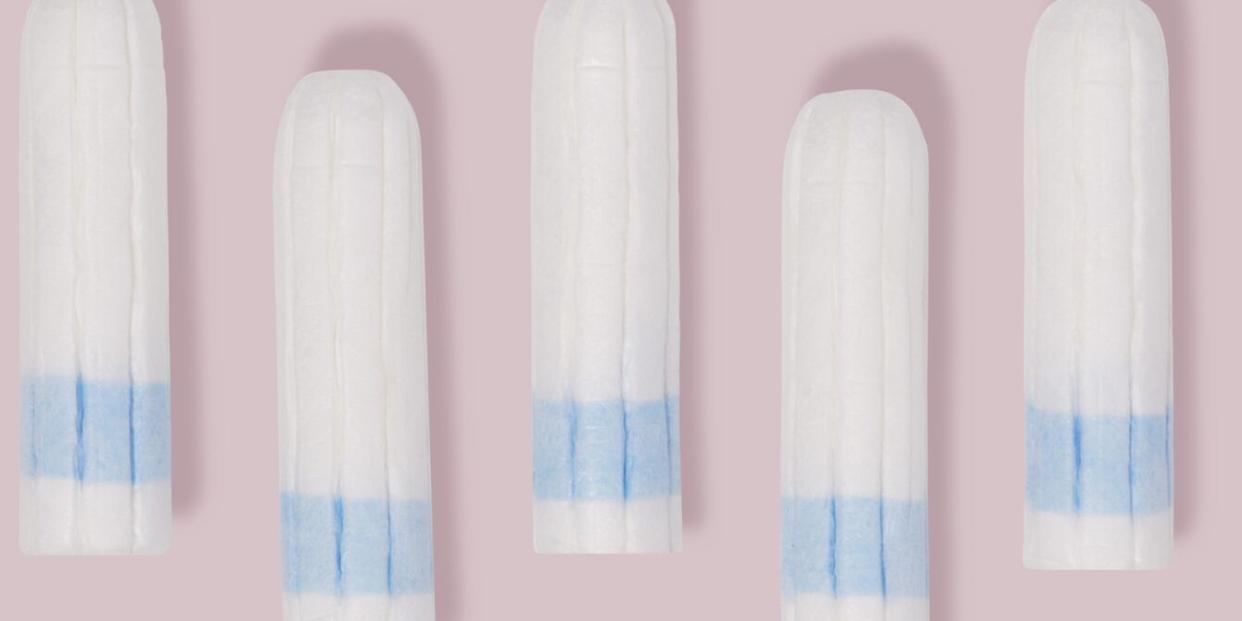Lead and arsenic may be lurking in your tampons, first-ever tampon study finds

Findings from a new study suggest that those tampons stashed in your bathroom may be harboring toxic heavy metals like arsenic and lead. Researchers from UC Berkeley and Columbia tested various types and brands of tampons and found metals in all samples in the first-ever study designed to examine the heavy metal content of tampons.
Millions of menstruating people use tampons every month, which makes the findings alarming, but researchers stress that we still don’t know how the heavy metals found in tampons affect the body.
“We do not yet know if metals can leach out of the tampon and whether they are absorbed by the body,” the paper’s lead author, Jenni Shearston, tells Fast Company. “We therefore cannot yet assess to what extent (if any) metals in tampons contribute to any health problems.” But we definitely need more research on this “severely understudied area,” Shearston says.
The study was published in the journal Environment International, and evaluated the levels of 16 heavy metals in 30 tampons from 14 different “top-selling” tampon brands. The metal concentrations seemed to vary depending on the country where tampons were purchased (US vs. EU/UK), whether they were organic or conventional, and store brand vs. name brand.
The researchers did not share the names of the tampon brands the study authors looked at, but did note that metals were detected in every type of tampon tested, and that no category of tampon had consistently lower amounts of all or most metals. Lead was higher in non-organic tampons, while arsenic was higher in organic tampons. (Researchers also looked at levels of cadmium, barium, calcium, copper, mercury, nickel and zinc, among other heavy metals.)
How heavy metals end up in tampons
There are a number of ways how heavy metals can end up in tampons, notes a media release from UC Berkeley, where Shearston is a postdoctoral student. Just as with heavy metal toxins in baby food (homemade or store-bought) and fruit juice, these toxins abound in our natural environment.
“The cotton material could have absorbed the metals from water, air, soil, through a nearby contaminant (for example, if a cotton field was near a lead smelter), or some might be added intentionally during manufacturing as part of a pigment, whitener, antibacterial agent, or some other process in the factory producing the products.”
Because the skin of the vagina is highly absorbent, tampons as a source of heavy metal toxins is a major concern. And because tampons are generally used on a monthly basis, sometimes for up to 8 hours at a time, they could result in higher exposure risk even from low concentrations.
“Although toxic metals are ubiquitous and we are exposed to low levels at any given time, our study clearly shows that metals are also present in menstrual products, and that women might be at higher risk for exposure using these products,” says study co-author Kathrin Schilling, assistant professor at Columbia University Mailman School of Public Health, to UC Berkeley.
What to do if you’re worried about heavy metals in tampons
As Shearston stated, we don’t yet know exactly how much of these toxins are absorbed by the body and what health effects they’ll have. But because we do know that lead exposure in particular is linked to cognitive impairment, neurological and reproductive impacts, limiting exposure is always a good idea.
You might consider switching to a medical-grade silicone menstrual cup instead of using tampons or even pads, which also tend to be made from cotton. Various brands of period underwear have also undergone backlash for PFAS exposure, but because both pads and period underwear only come into contact with the vulva and are not inserted into the vagina, they may be a better option—but still, more research is needed.
Tampons in the US are considered a Class II medical device by the FDA. “However, there is no requirement to test tampons for chemical contaminants, and the FDA only recommends that tampons not contain two dioxin compounds or pesticide residues,” study authors write.
“I really hope that manufacturers are required to test their products for metals, especially for toxic metals,” Shearston tells UC Berkeley. “It would be exciting to see the public call for this, or to ask for better labeling on tampons and other menstrual products.”

 Yahoo News
Yahoo News 
